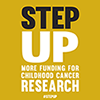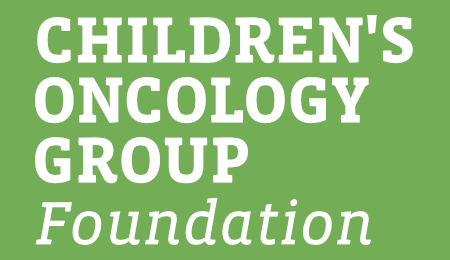What is a Clinical Trial?
Clinical trials are used to determine the most effective and safest treatment for a disease. Each trial is aimed at improving survival rates or reducing side effects or late effects of treatment. It is important to understand that clinical trials are standard common practice in cancer treatment for children, adolescents and young adults. In fact, a higher percentage of newly diagnosed children with cancer and their families participate in clinical trials perhaps than in any other field of medicine.
Development and Review of COG Clinical Trials
Many people and organizations are involved in developing a clinical trial. COG is the largest pediatric clinical trials group in the world, with more than 200 participating hospitals. For each new clinical trial, a group of doctors, nurses and other experts propose how the treatment should be given. Many experts within COG review the trial before it is sent to the National Cancer Institute (NCI) for approval. A review board at each hospital participating in a clinical trial must also approve the trial, in part to make sure that the rights of patients who will be enrolled in the trials are protected. It is helpful to understand that each trial is reviewed many times by different experts in and outside of COG before being started at a treatment center.
Types of Clinical Trials
There are two types of clinical research trials, therapeutic and non-therapeutic.
- Therapeutic trials are ones which enroll patients and provide a specific treatment to the patients to study its impact on cancer.
- Non-therapeutic trials are ones which do not provide a treatment to patients, but instead study important factors which help advance the understanding of cancer and its impact. For example, some non-therapeutic studies collect tissue specimens to examine the cellular structure of a cancer tumor. Other studies track epidemiological information such as the long-term health effects of chemotherapy. Non-therapeutic studies often lead to therapeutic ones.
Within therapeutic trials, there are three different phases used to evaluate new treatments. Each phase has a different goal.
- Phase I studies are the most basic of clinical trials. Here, drugs are tested to evaluate the dosages of the treatment, and how often the treatment can be administered (maximum tolerated dosages, MTD). As it is unknown whether the treatment will be effective against a particular disease, people with a variety of diseases are enrolled. Drugs are given at gradually increasing dosages until there are unacceptable side effects (dose-limited toxicities, DLT).
- Phase II studies use the results from Phase I studies regarding MTD and DLT. The treatment is targeted at the population of patients which responded most favorably in Phase I trials, because it is believed to hold promise for that particular group of patients.
- Phase III studies are those that most children will receive when newly diagnosed. These studies will test the standard treatment (current best) against promising alternatives that may increase cure rates or decrease side effects or late effects of treatment.
Your child may be in a Phase III clinical trial that compares two or more treatments (called study “arms”). Each treatment has been shown to be effective in other studies but not yet compared to each other or the current best treatment. Usually, one treatment arm is the "standard" or the best proven current treatment. The other (new) treatment has some changes or additions to determine if they cure the disease in more children, control disease longer, cause fewer or less serious side effects, or change the number of days spent in the hospital. If a clinical trial is not currently available at the time your child is diagnosed, your child will receive the best standard treatment.
To learn if one treatment in a Phase III clinical trial is better, each child is assigned randomly to one of the treatments. Assigning children randomly is a process like flipping a coin that assures that each child has a fair and equal chance of being assigned to either/any of the treatments. In most studies, we do not know which treatment is better until all the children taking part in the clinical trial have completed treatment and have been observed for several years. However, if one of the treatments is already found to be better than the others while the trial is still going on, the trial is stopped, and all children are given the better treatment. If for any reason the treatment plan is found to be not the best for your child, the plan will be changed.
Individual Drug Studies
Individual drug studies can be conducted at a large or small number of hospitals, depending on the purpose of the trial. In individual drug studies, a drug manufacturer closely monitors lab tests and results from the use of the drug, and releases only a small amount of the drug during the period of the study. These studies are usually performed at centers that are well equipped to gather the needed data and to provide a quick transfer of lab specimens.
Supportive Care Studies
Supportive care studies evaluate ways of helping with the side effects of treatments. These can also be performed at a few medical centers at a time or at many hospitals at once. Most often though, these research questions can be answered with fewer patients. Once the results are shared, patient outcomes may be improved sooner than through a large national study.
Limited Institution Trials
Sometimes, clinical trials are performed in only a few hospitals. These are called Limited Institution Trials and they are able to answer a research question with fewer patients than most national trials require. Answers to important research questions can be obtained in a shorter time through such limited trials. COG limited institution trials are reviewed and approved in the same manner as all other clinical trials.
Pilot Studies
Pilot studies are examples of limited institution trials. In these studies, investigators are studying a new treatment or therapy combination. Such studies are done at only a few institutions with a limited number of patients to see if the treatments are safe and effective against the targeted disease. If it is found to be effective, the new therapy may be open to more institutions. The results of pilot studies are compared to the best current treatments to find out if the new treatments are better in some way. Pilot studies also help to decide whether the drugs or therapies being tested should be investigated further using more patients.
COG and its Role in Clinical Trials
Everything known about how to cure children with cancer has been learned from research. COG has been a large part of developing this knowledge. In fact, by treating children in clinical trials, COG members have increased the cancer cure rate for children from less than 10 percent 40 years ago to over 80 percent today. All COG members must maintain the highest standards for treating patients with cancer. They follow COG-defined protocols to prove their scientific, medical and ethical scientific expertise. To help develop new ways to treat cancer, COG members submit diagnostic, treatment and follow-up data to a central place in order to combine the data from many patients and obtain results rapidly. Each year, more than 60% of young people with cancer are treated on research protocols. These clinical trials compare the best available treatment to one or more experimental treatments, which are carefully developed with the goal of finding the best possible treatments for each type of cancer. When a child is treated on a COG protocol, all the information about the patient’s diagnosis, treatment and results is collected and analyzed, and findings are published for review by all members of the Children’s Oncology Group. The group then builds on this knowledge to determine the next steps for research.
COG is considered the premier children’s cancer research organization in the world.
While nearly 13,500 children and adolescents are diagnosed with cancer each year, there are many different kinds of children’s cancer. When divided into the specific cancer types, the number of children with each is relatively small. In research, large numbers of patients are critical to ensuring that study results are meaningful. By enrolling patients from many hospitals in the same trial, the results become statistically significant. This approach is called collaborative research and is how COG functions. COG conducts approximately 100 different cooperative research studies at one time. In any given year, about 85 trials are therapeutic and 15 are non-therapeutic. COG has treated more children with cancer than any other organization in history and has been responsible for many of the improvements in the treatment and cure rates during the past 40 years. But its most lasting legacy may be in developing a model of cooperative research.
Finding a Clinical Trial
Talk with your healthcare team at your COG institution about clinical trials that may be available. NCI maintains a comprehensive list of cancer clinical trials that includes most trials sponsored by the NCI. It also contains many clinical trials sponsored by pharmaceutical companies, medical centers, and other groups from around the world. To search the NCI clinical trials database, click here.








